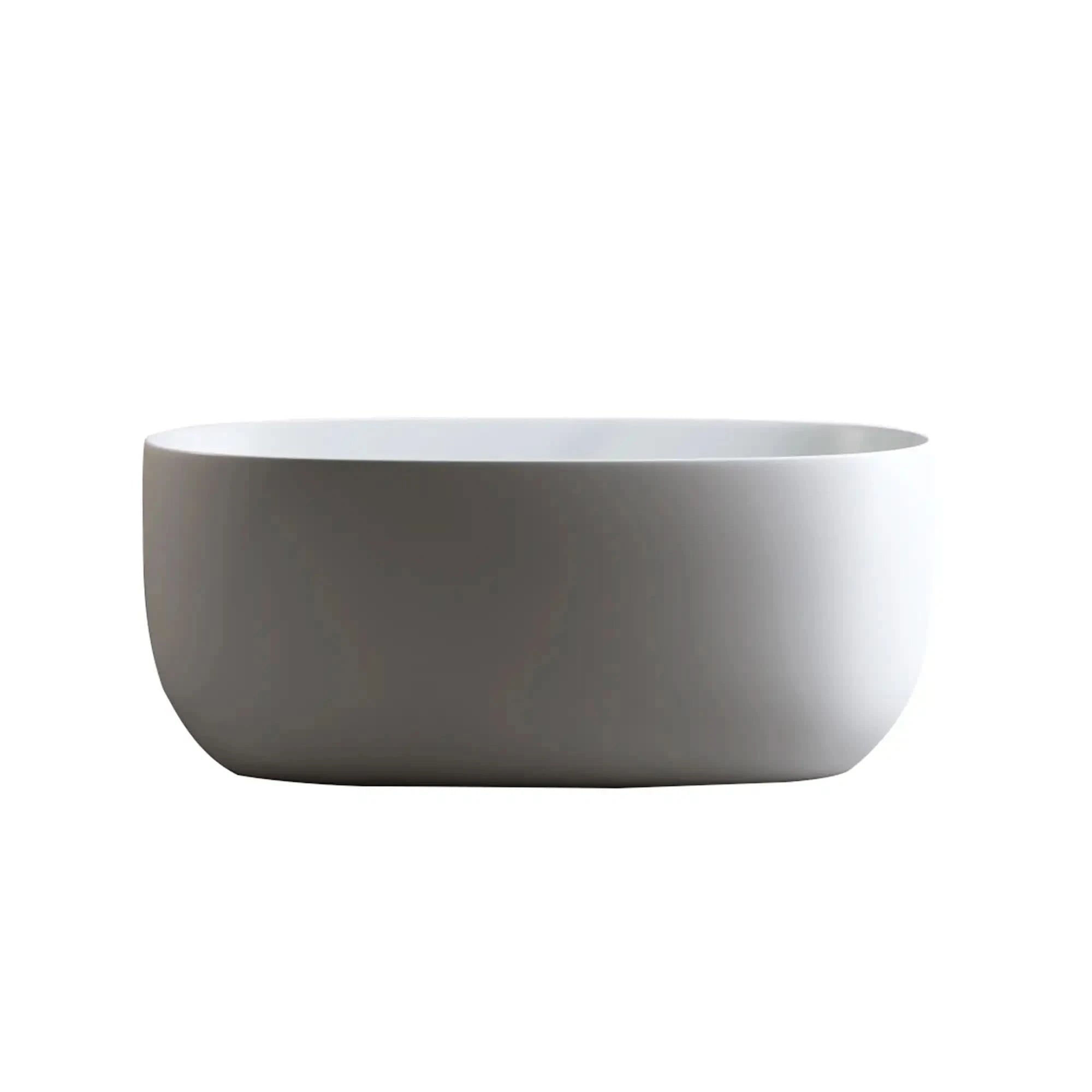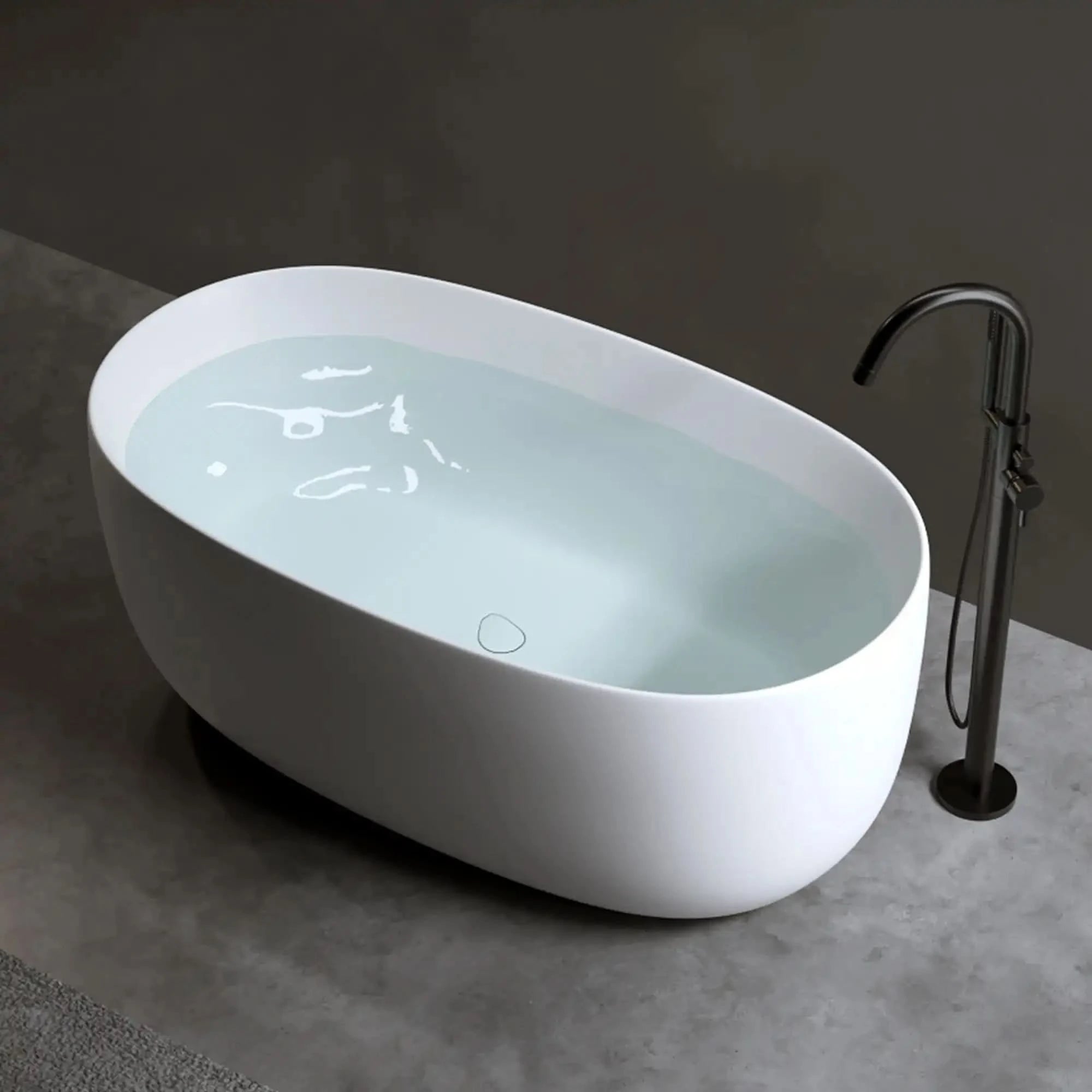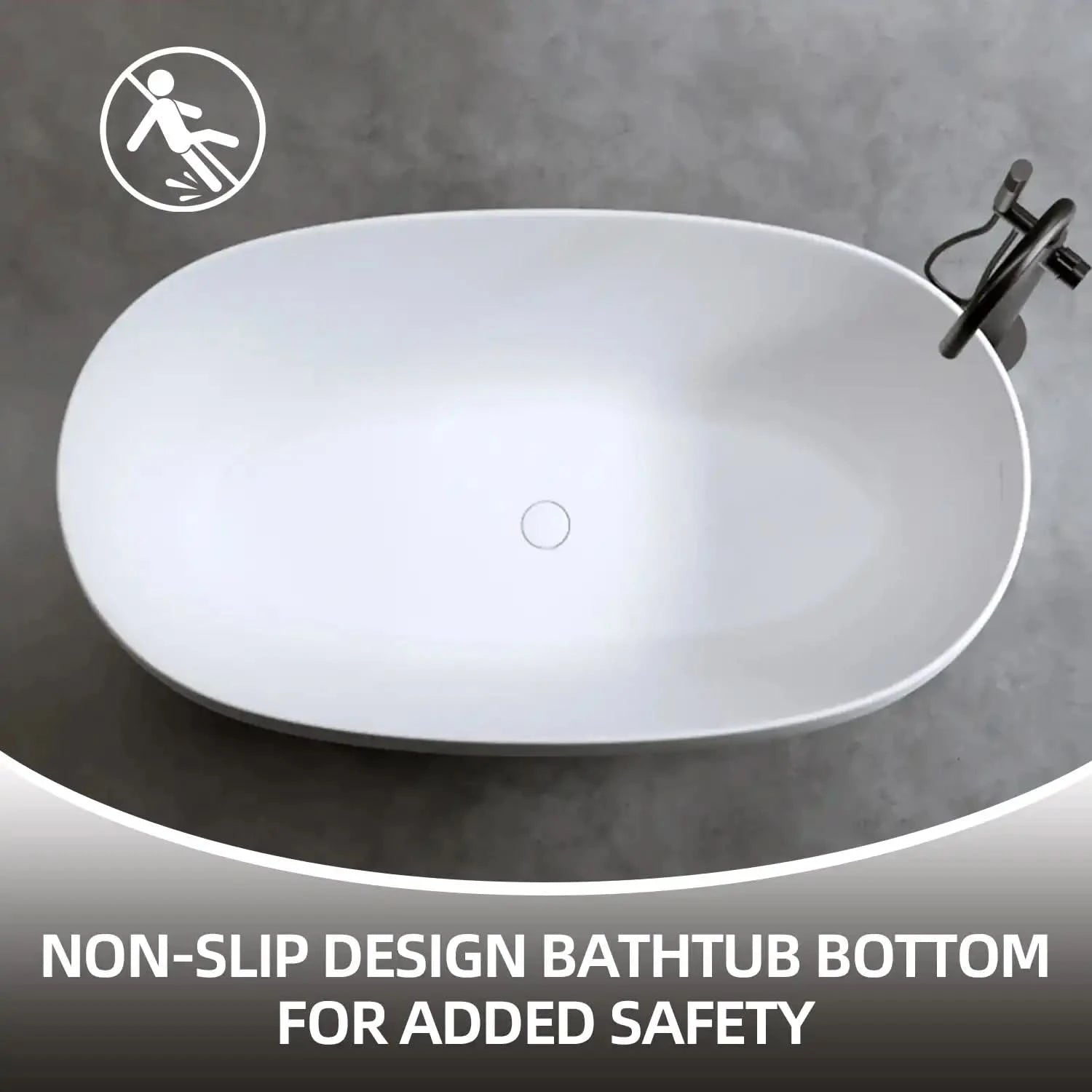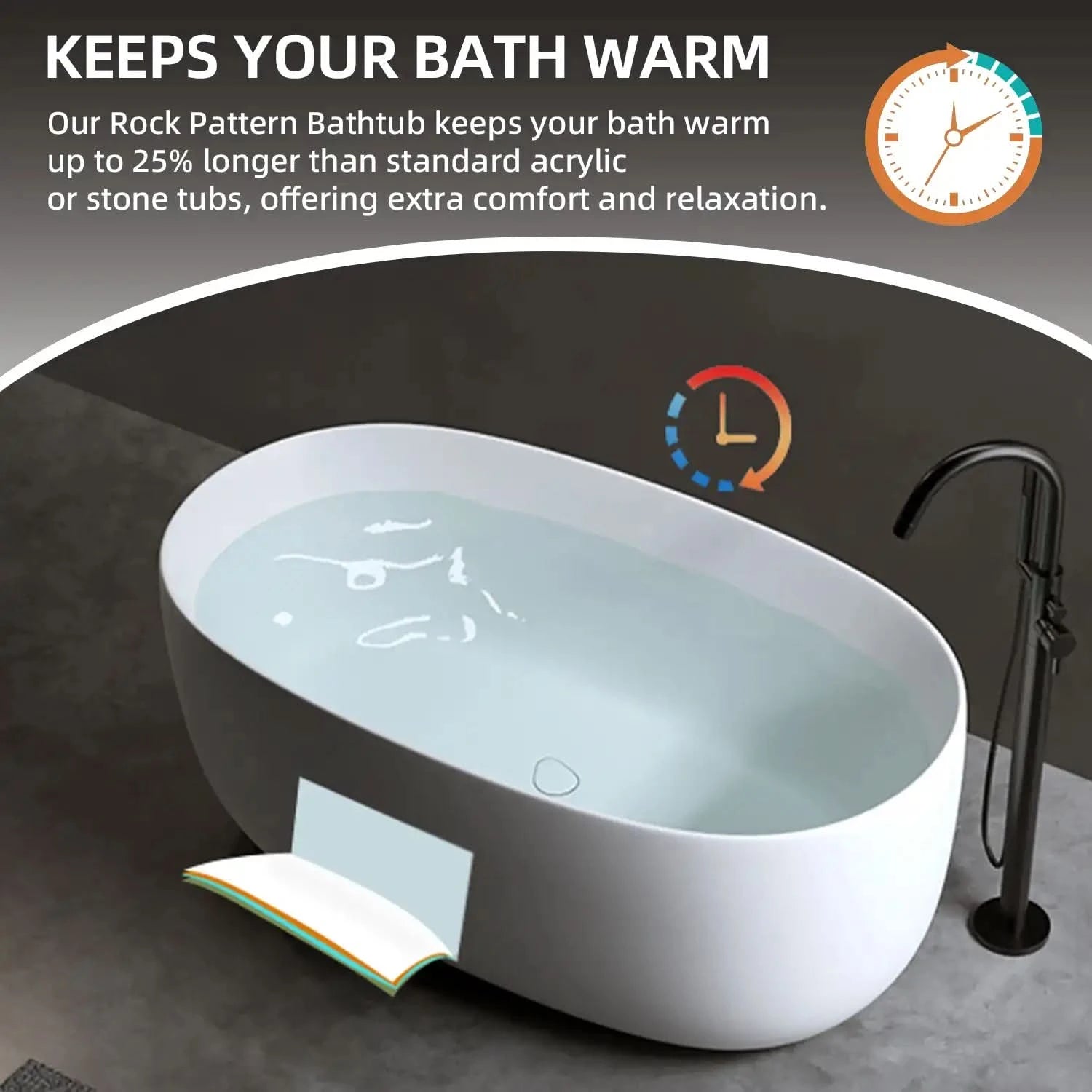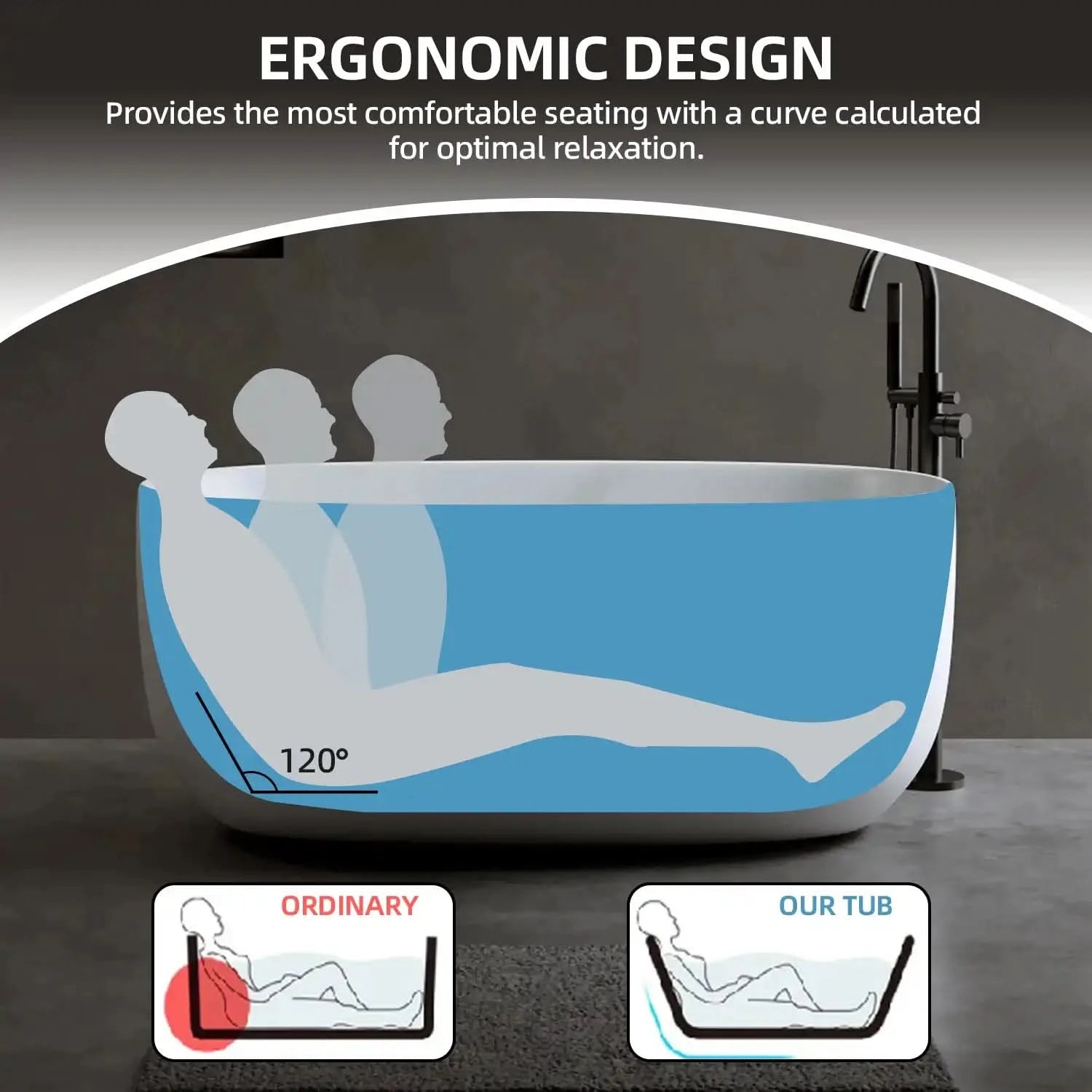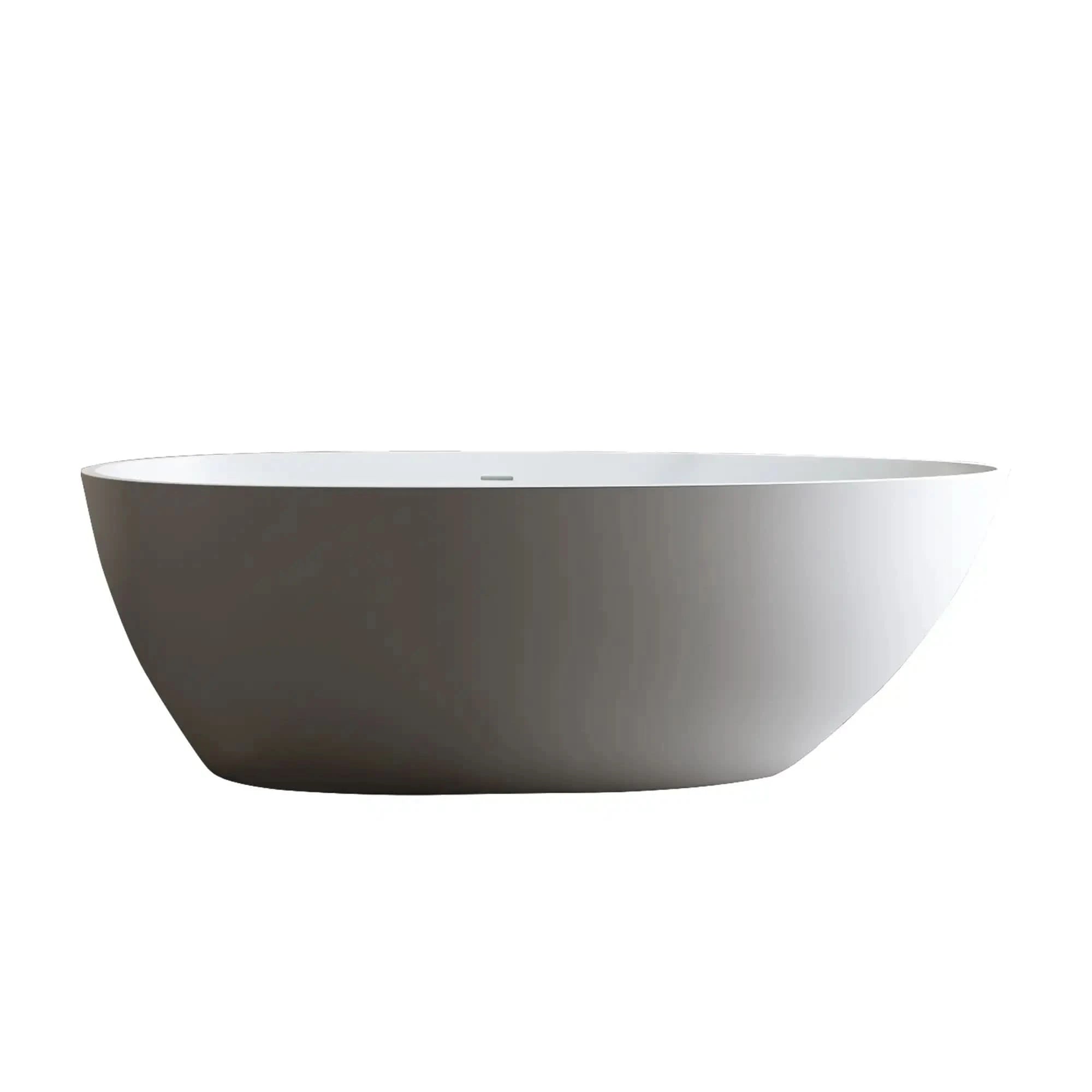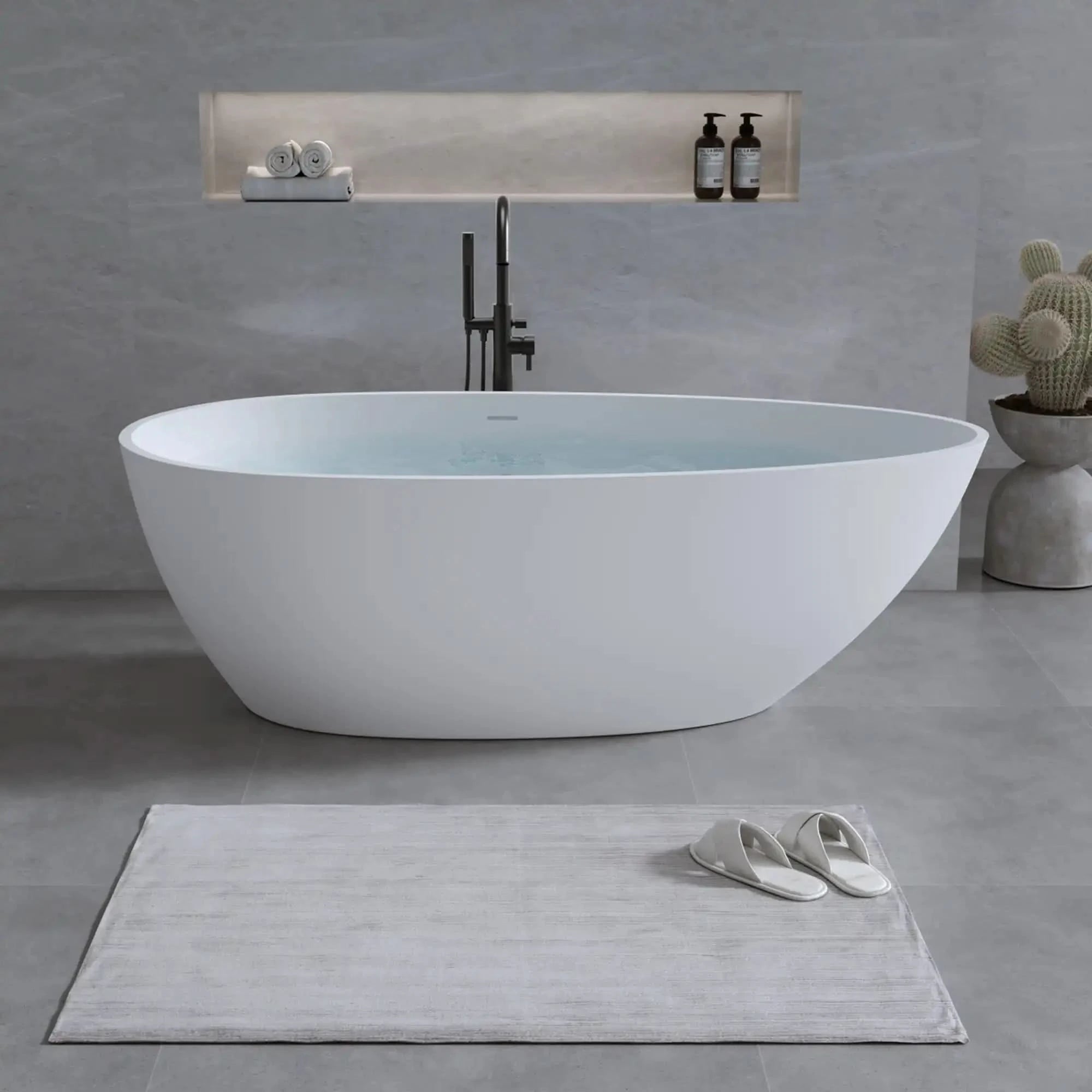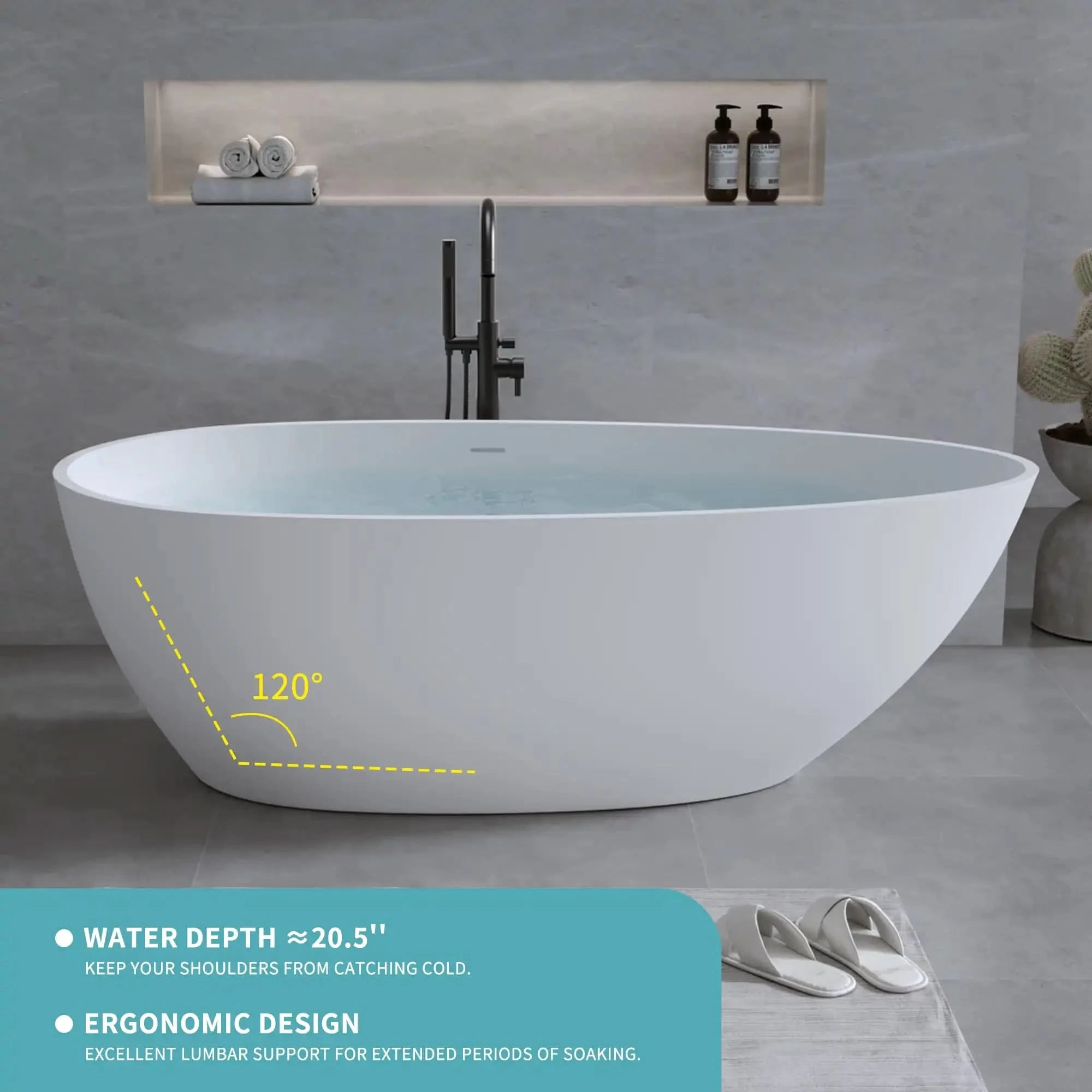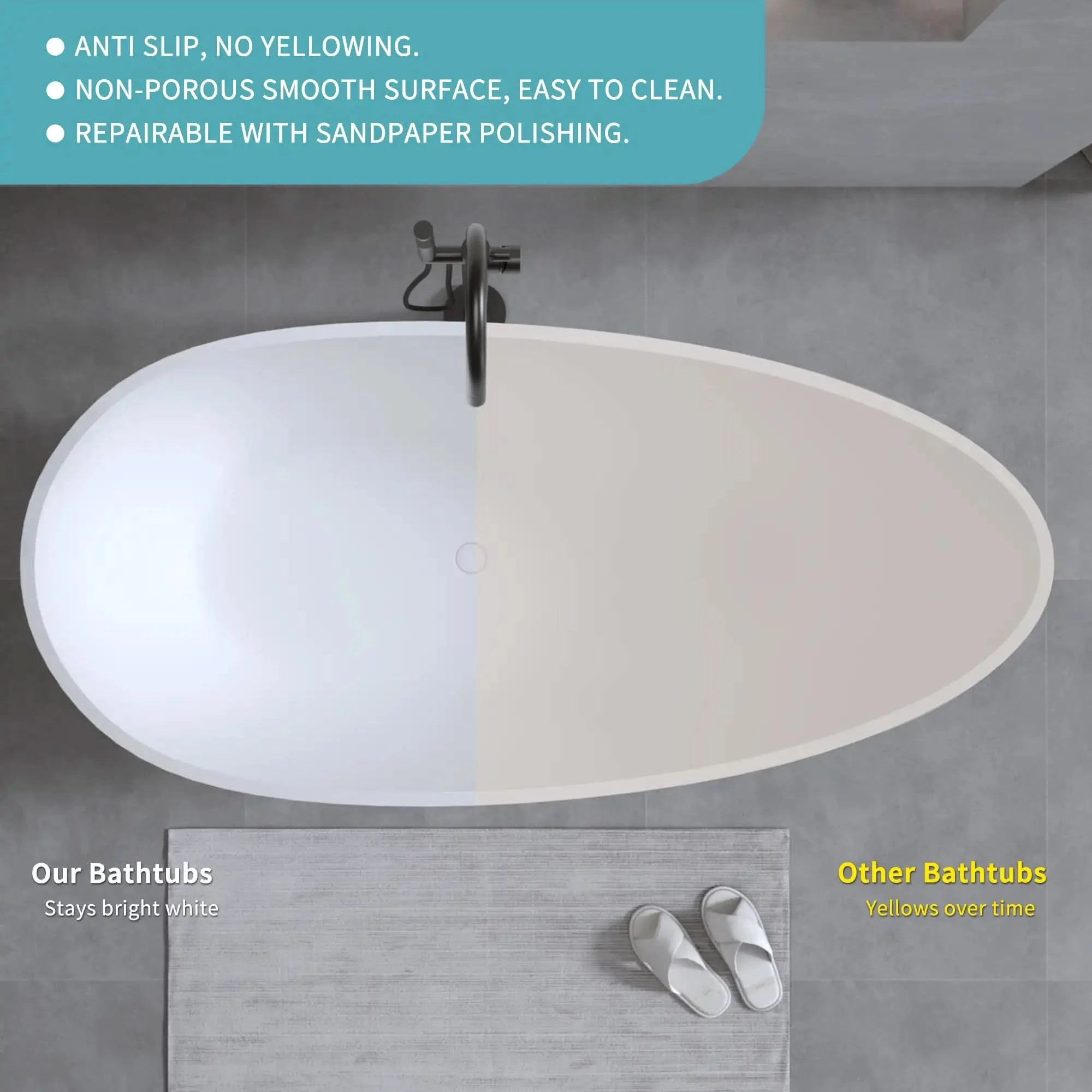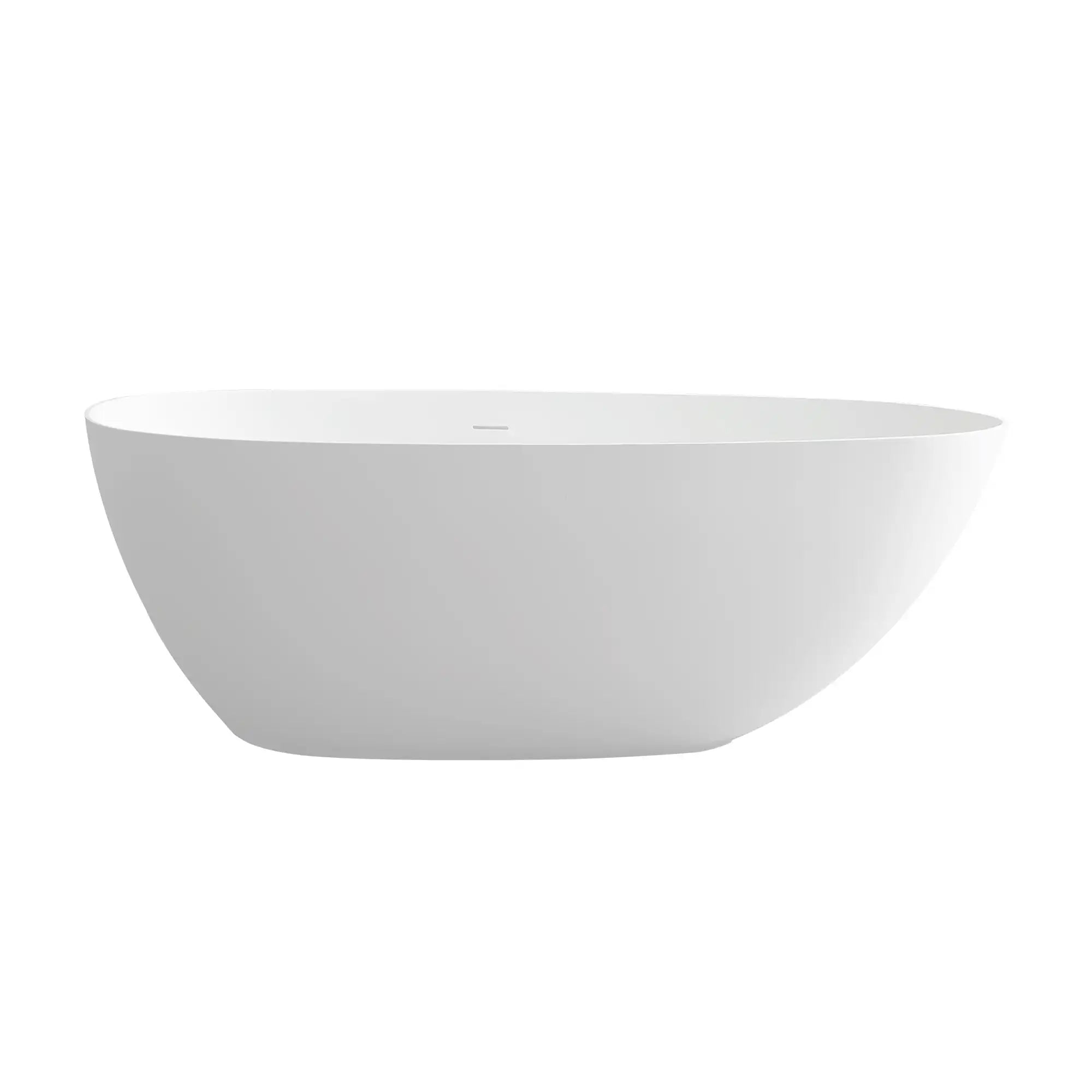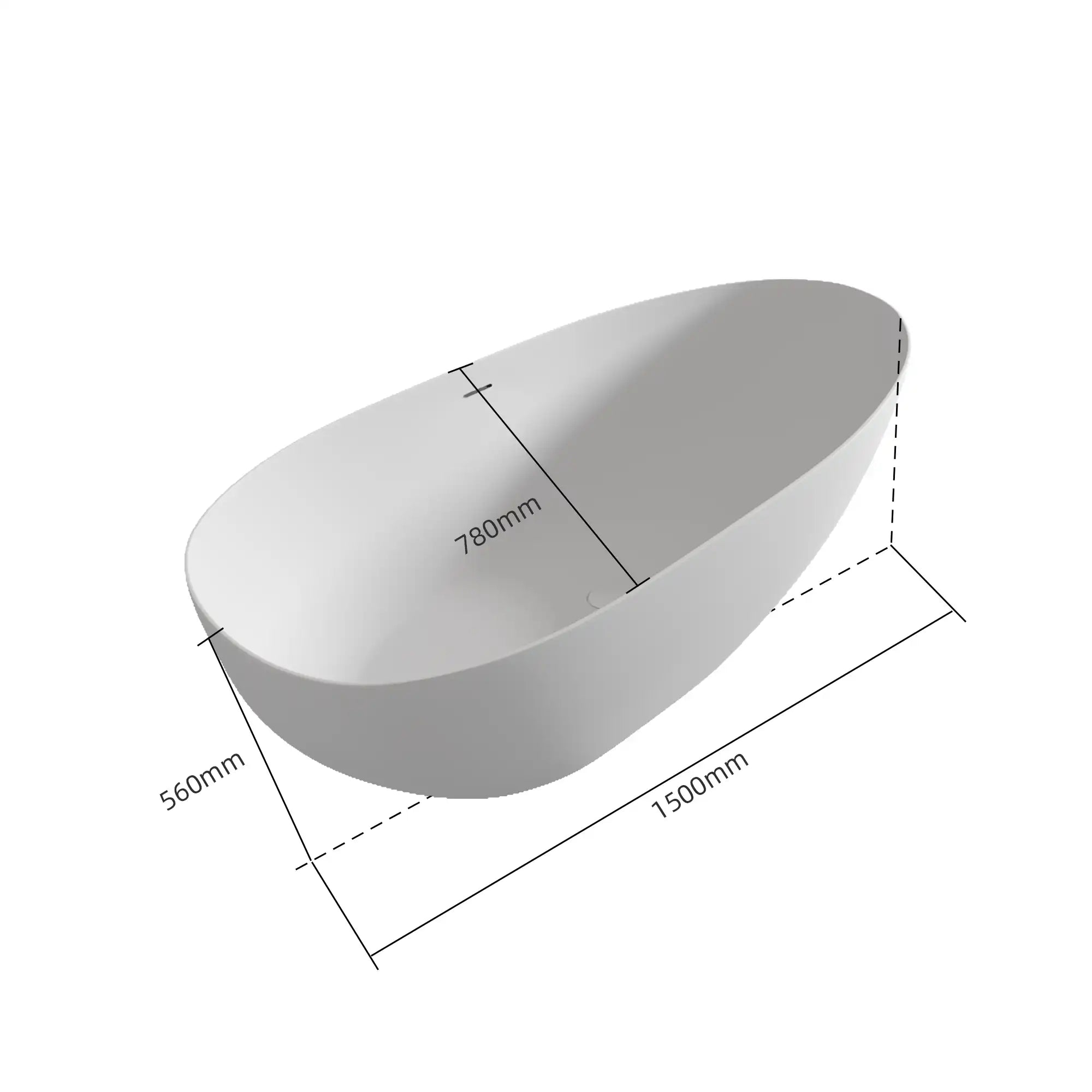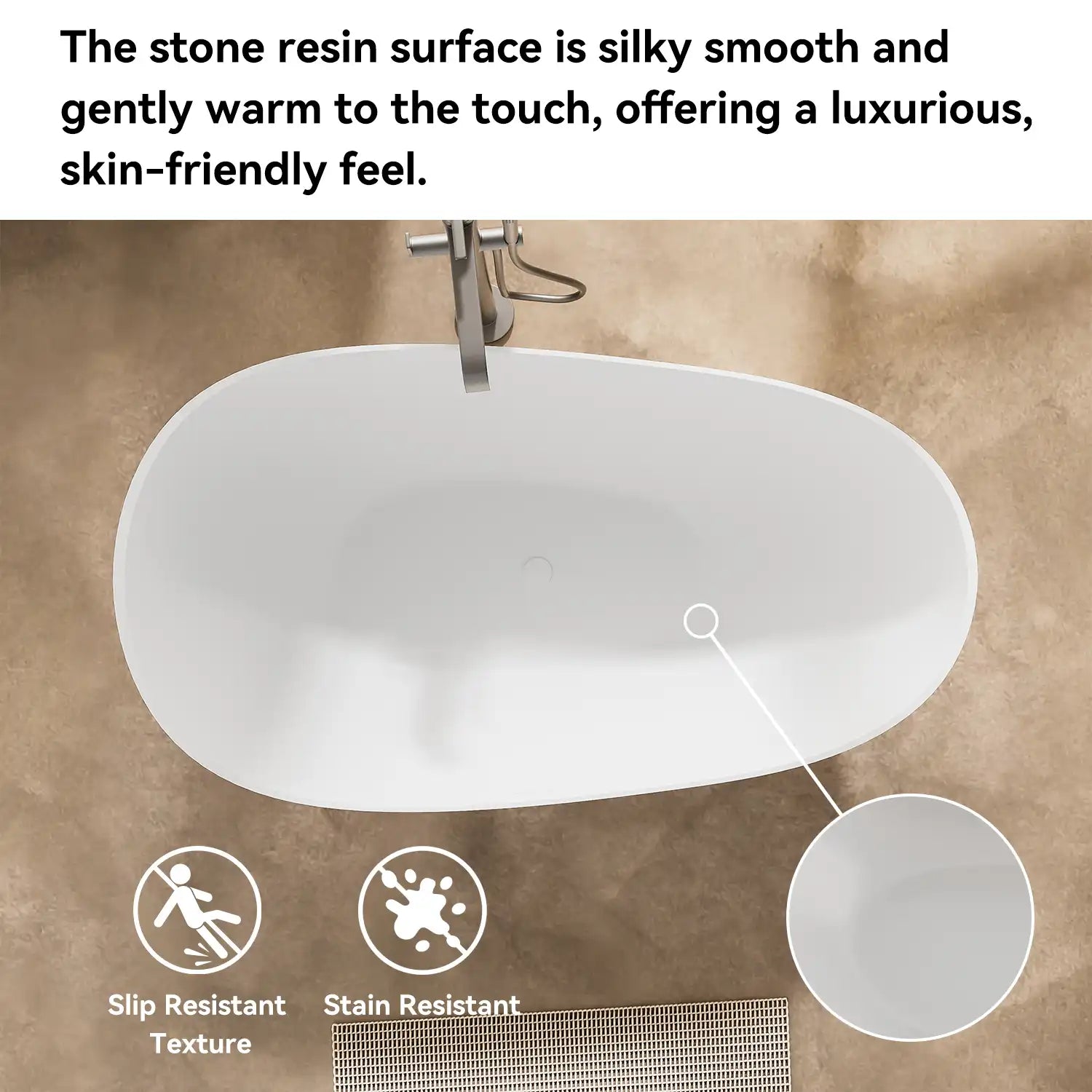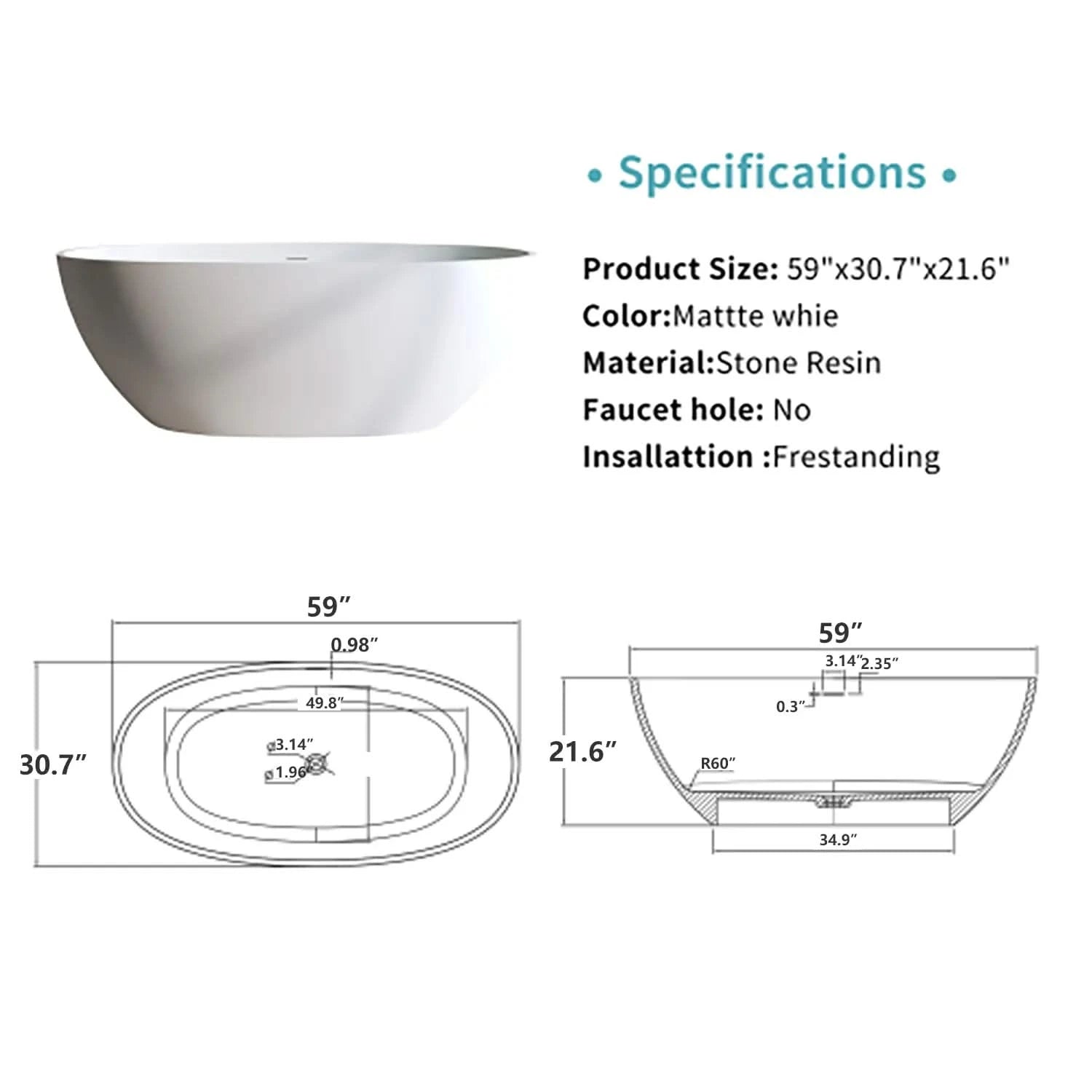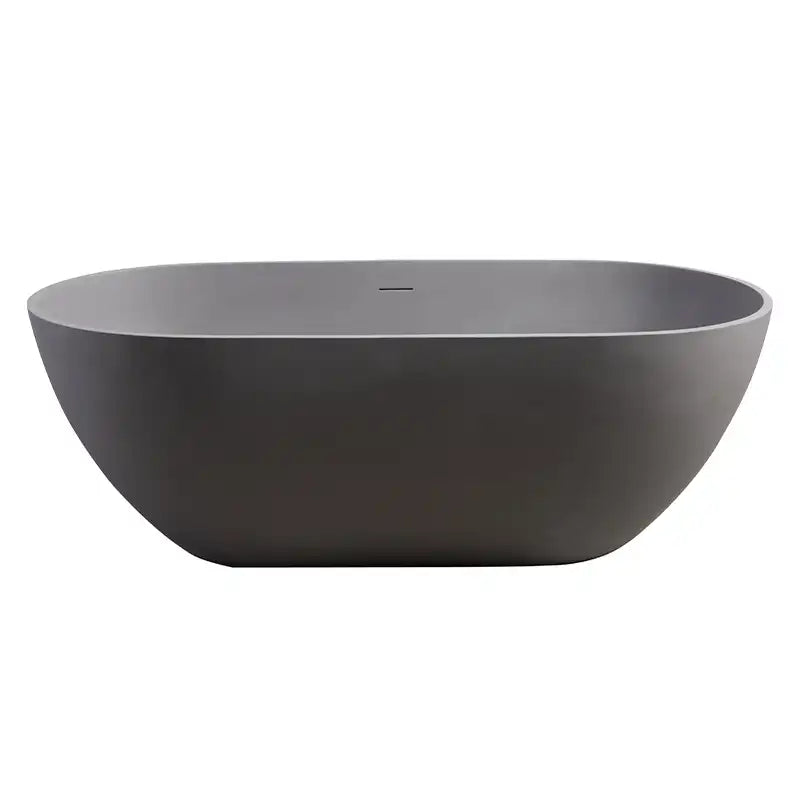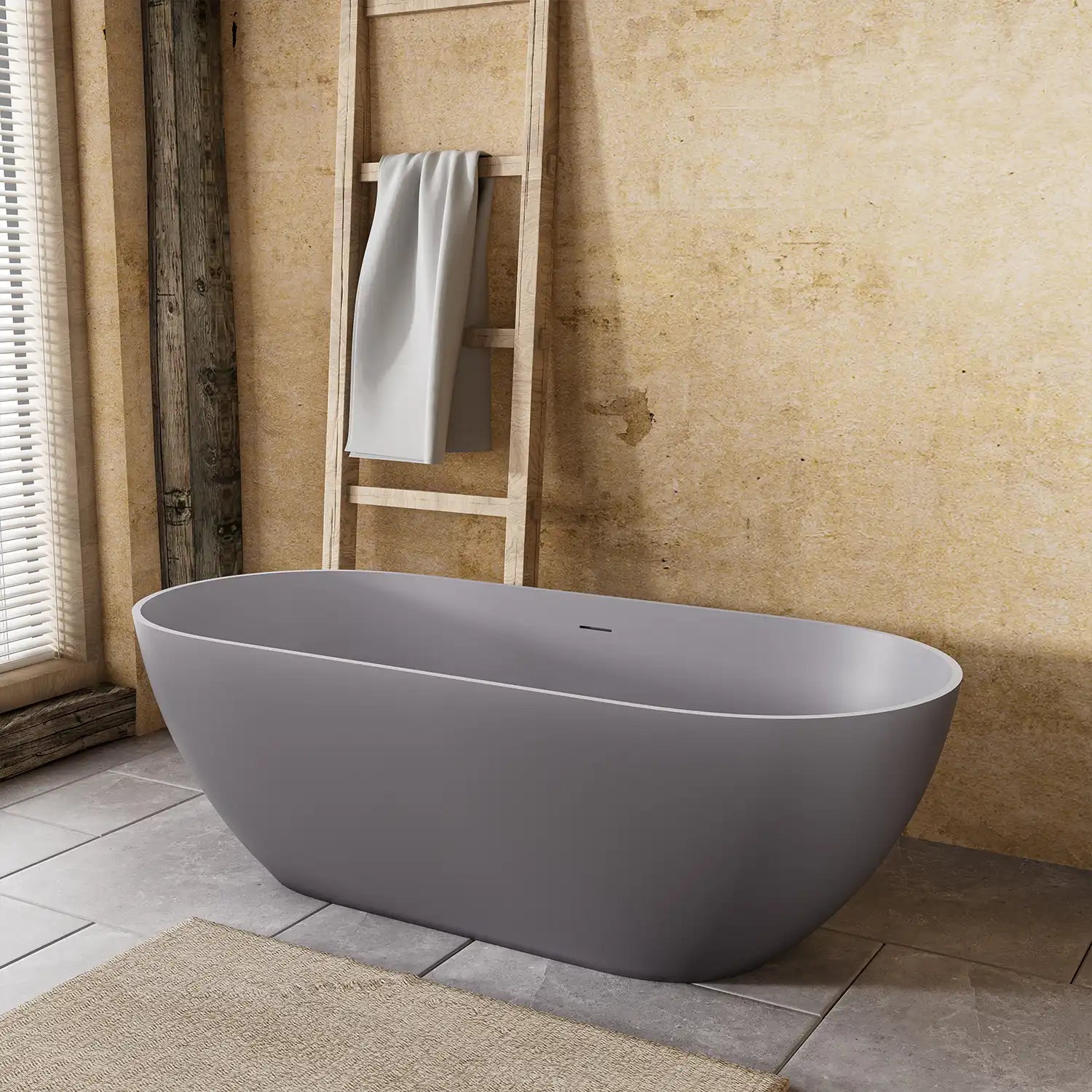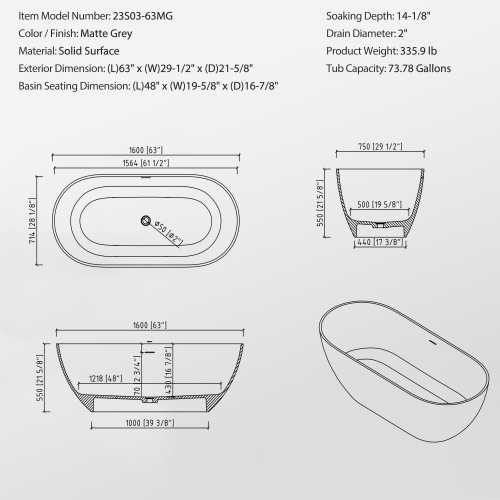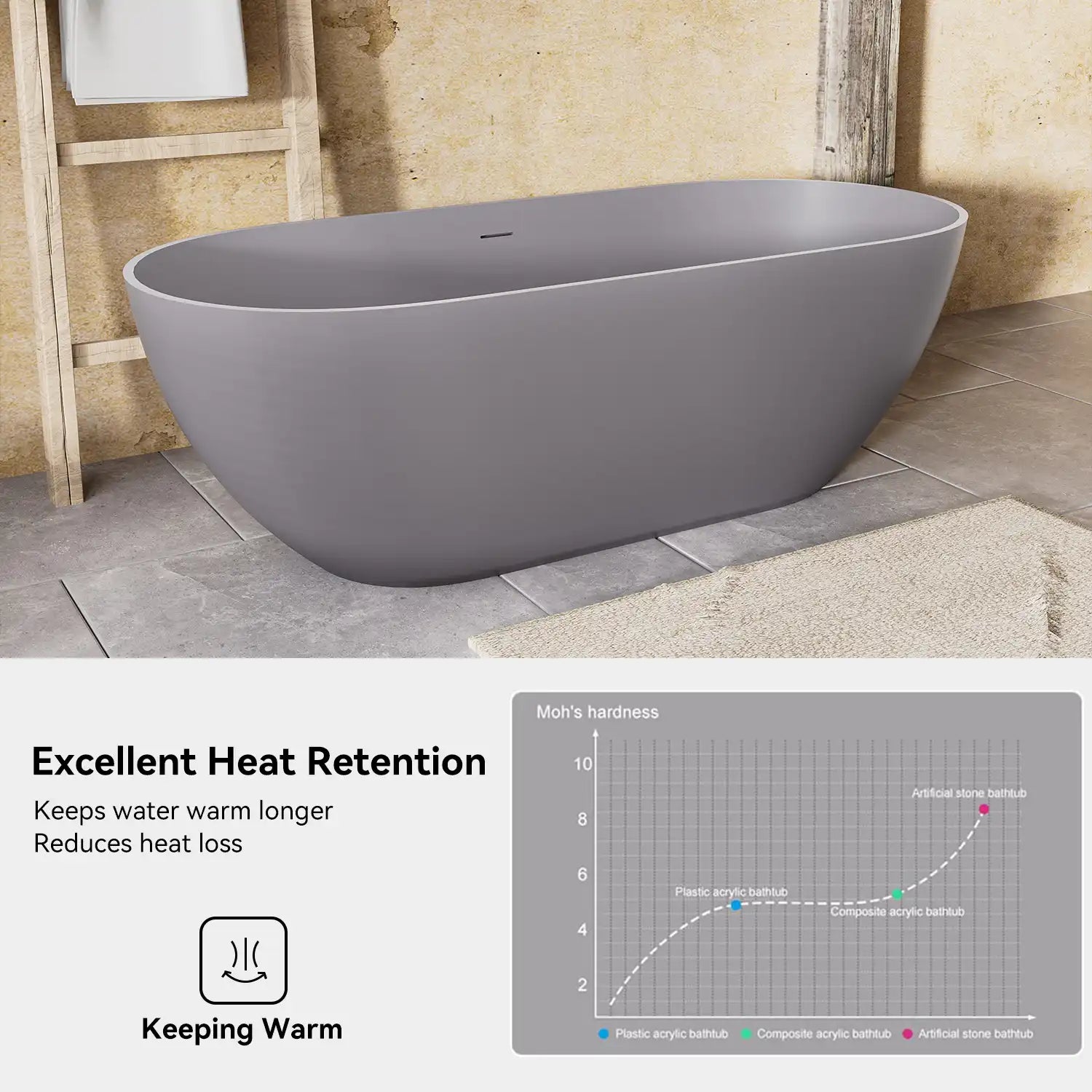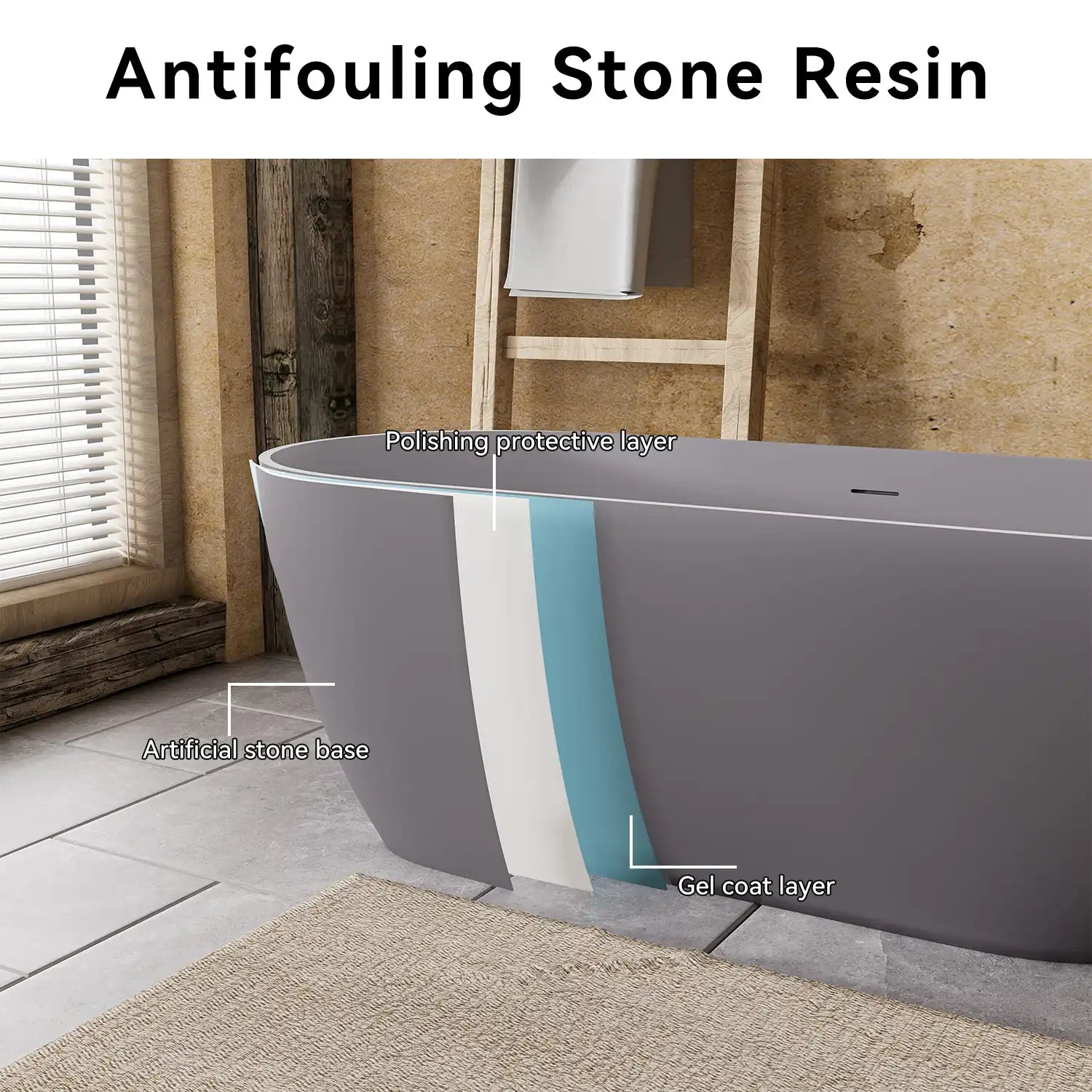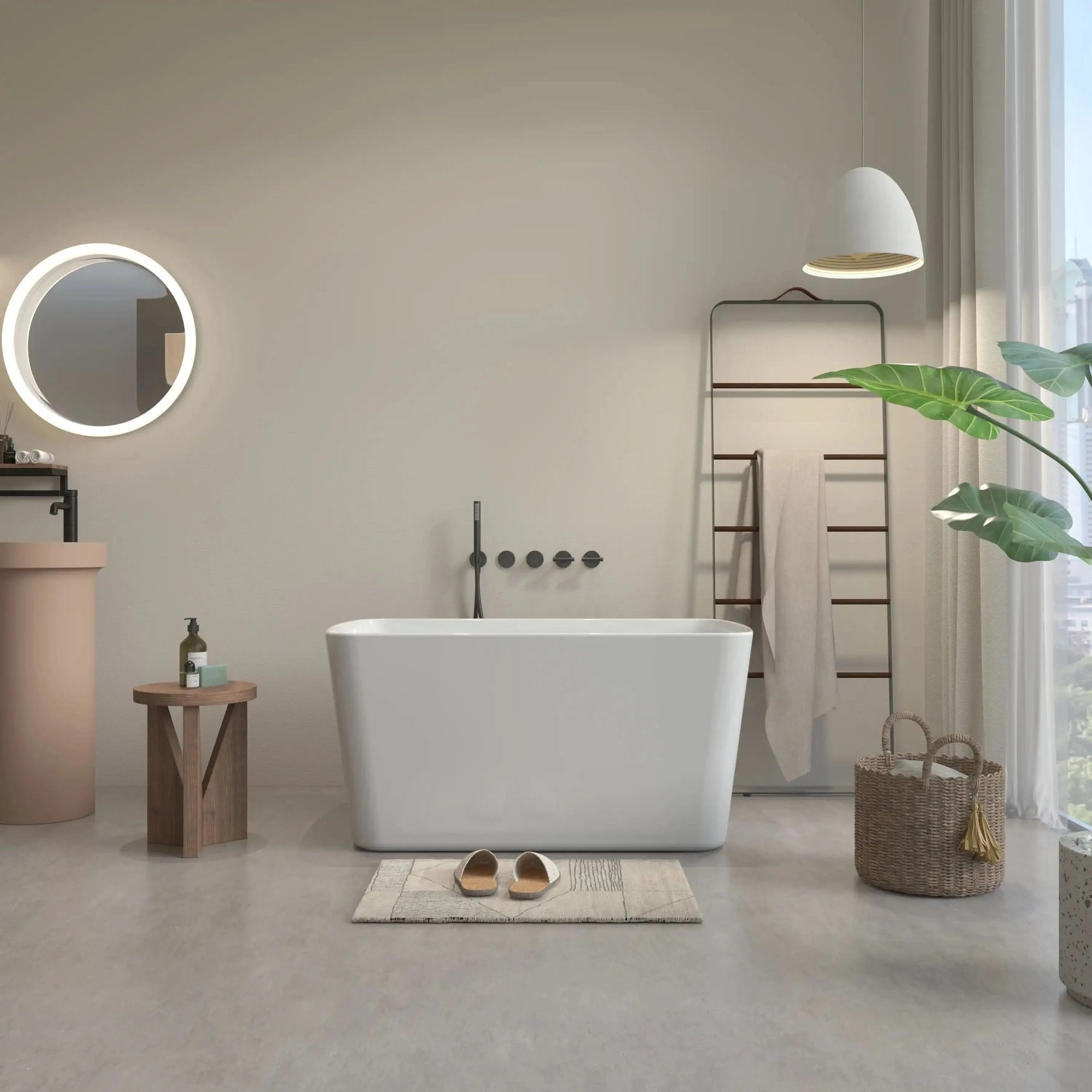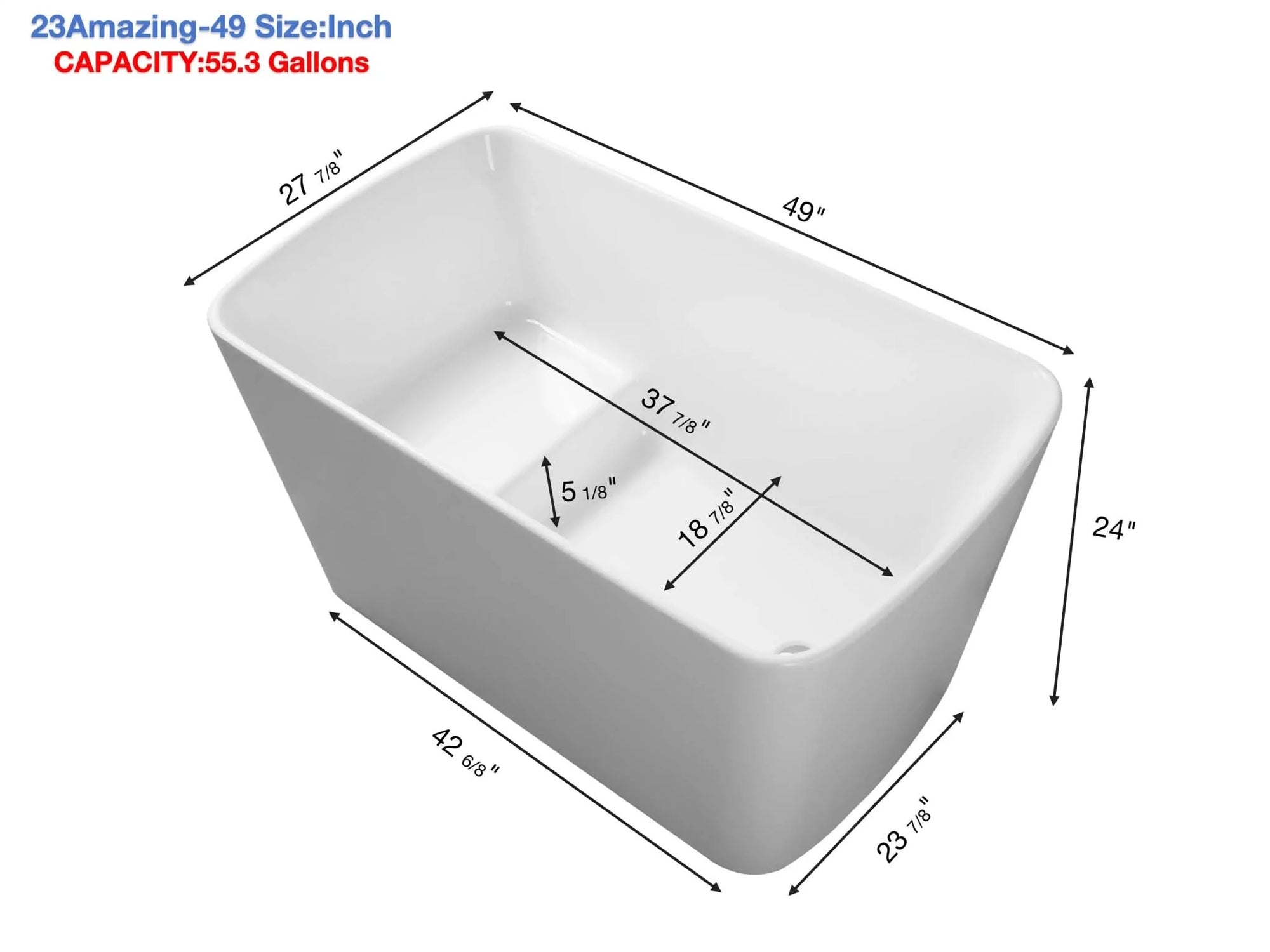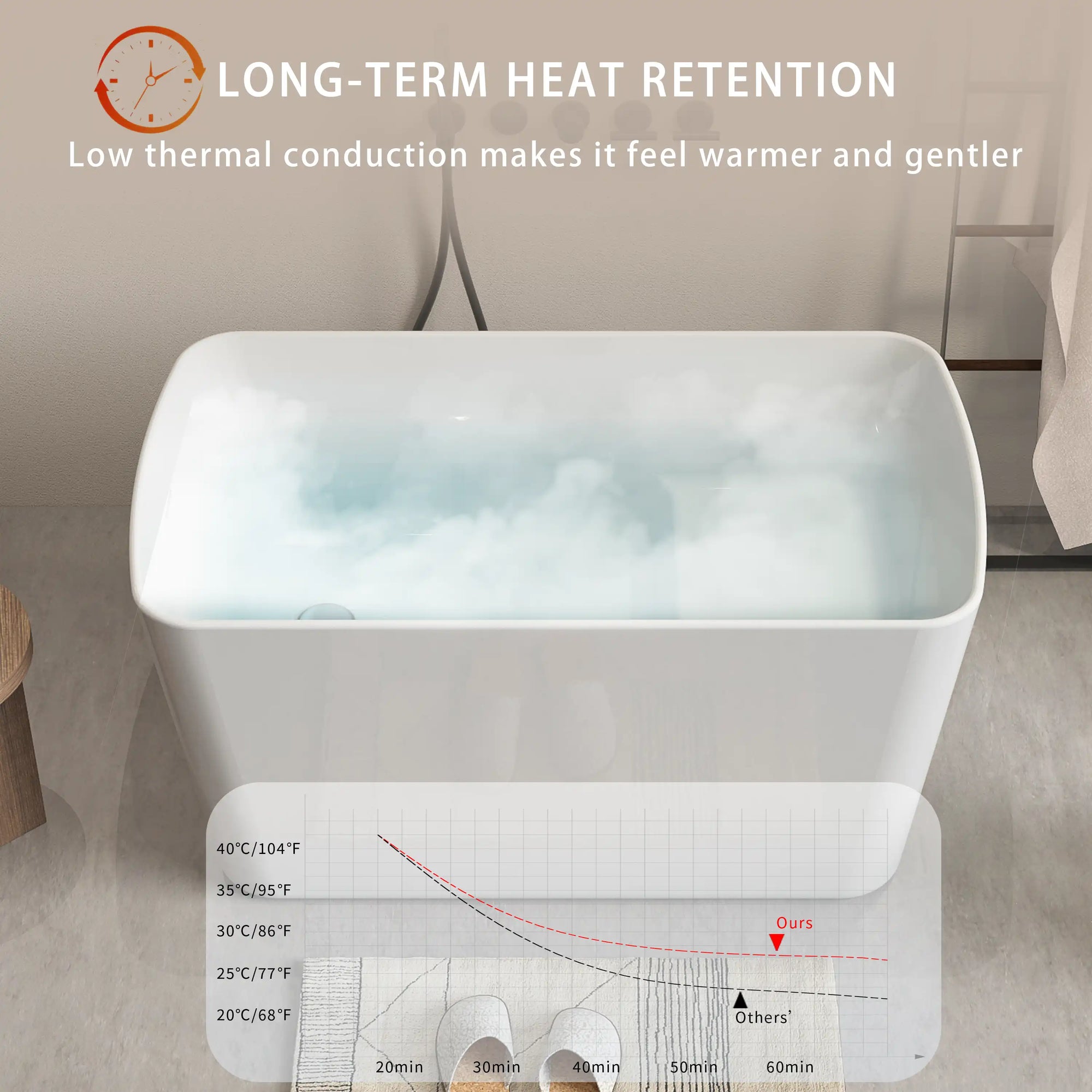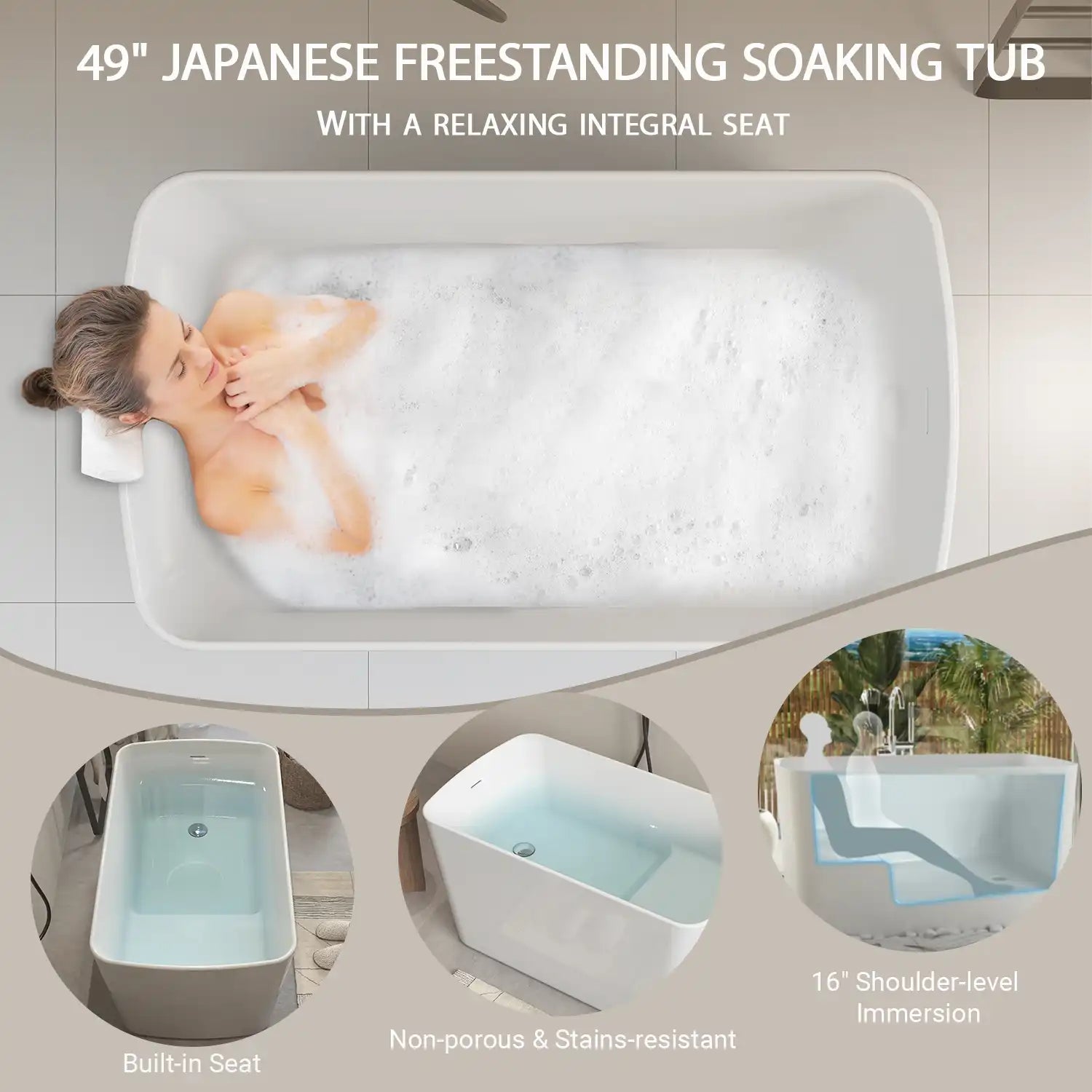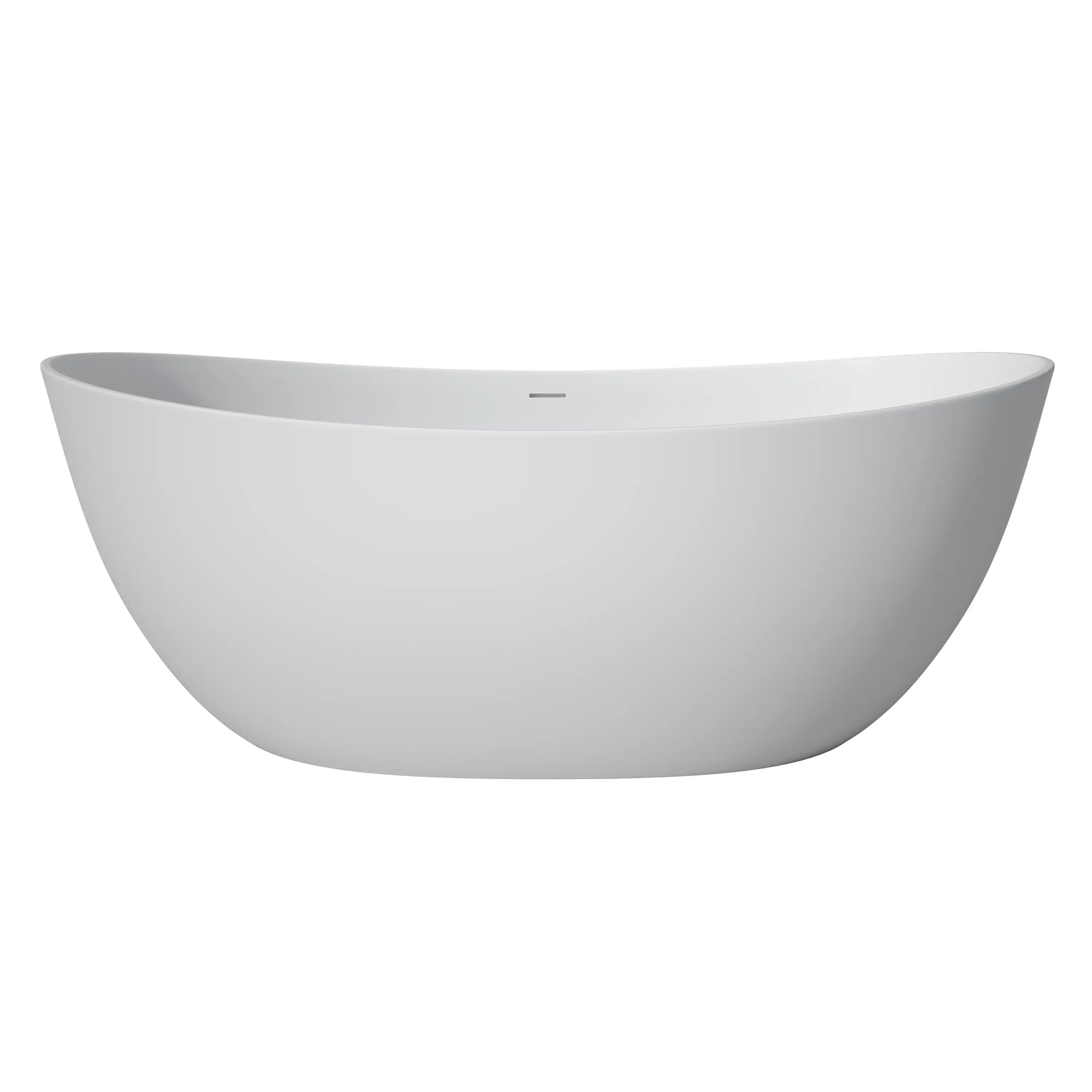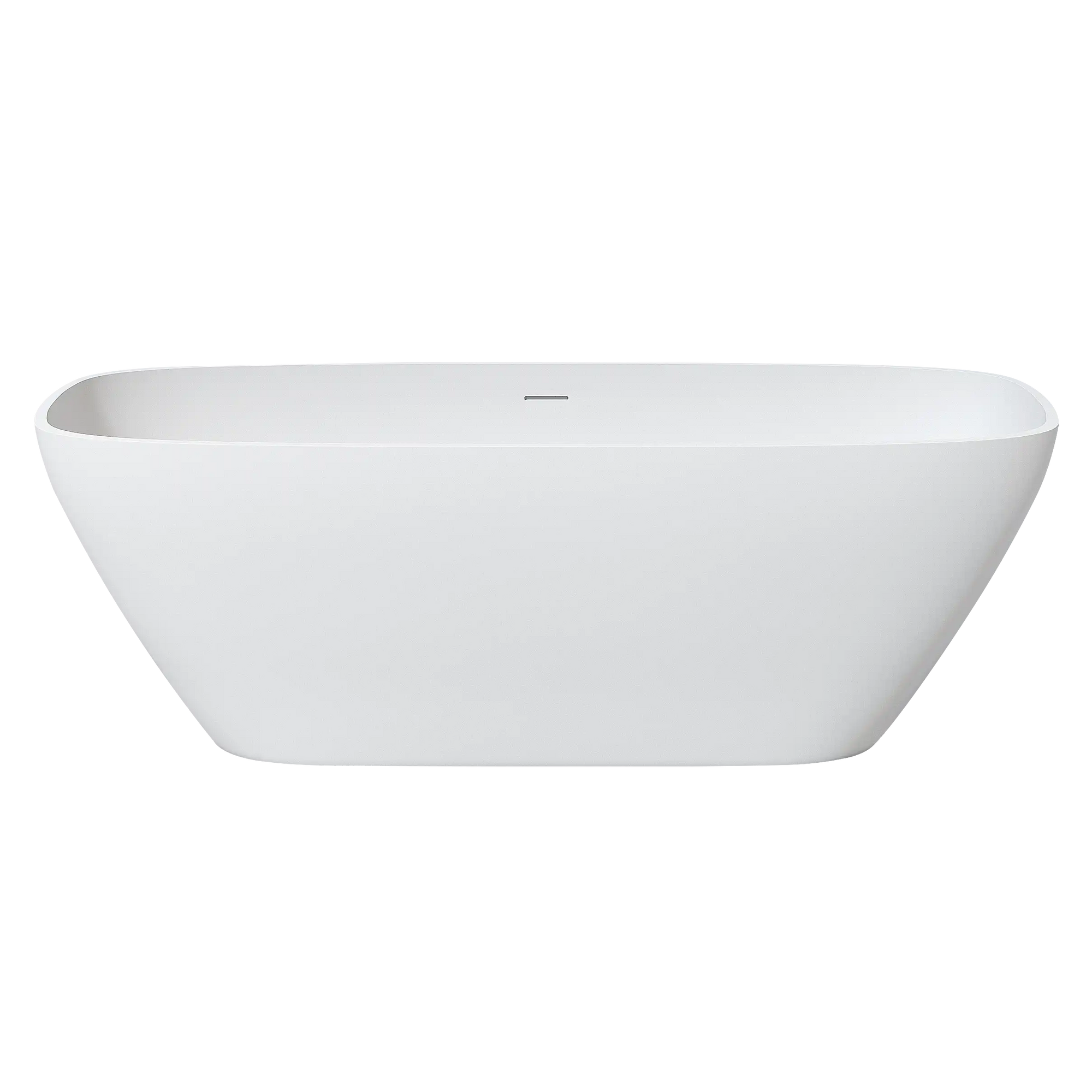When it comes to remodeling a bathroom, the bathtub often becomes the centerpiece of both design and function. Choosing the best bathtub involves a combination of personal preference, practicality, and understanding the features that will elevate your bathroom’s style and comfort. Whether you’re after a modern freestanding tub to create a spa-like atmosphere, or a practical solution for a small bathroom, making the right choice can transform your bathroom from a utilitarian space into a relaxing retreat.
In this guide, we’ll explore the different types of bathtubs, the materials available, and how each of these factors impacts both the functionality and aesthetic of your bathroom. We'll also look at various models from ACE DECOR to provide concrete examples of how each style could work in your home.
The Core Elements of the Best Bathtub
Before we dive into specific styles and materials, it’s essential to understand the key factors that determine the best bathtub for you. Here’s what to consider:
1. Functionality and Purpose
The first question to ask is: How will the bathtub be used?
Is this for a master suite where you want a luxurious soaking experience, or is it for a family bathroom that requires durability and ease of use? Understanding the purpose of the tub helps narrow down your choices based on size, features, and even installation type.
If you’re looking for a spa-like experience, freestanding tubs like the LY Curved Freestanding Soaking Tub are perfect. These tubs are designed for comfort and deep soaking, providing a luxurious atmosphere that transforms your bathroom into a place of relaxation.
On the other hand, for a functional family bathroom, you may want to consider a built-in tub that’s easier to clean and can double as a shower for everyday convenience.
2. Size and Space
Your bathroom size plays a crucial role in determining the type of bathtub you can choose. Large, luxurious bathtubs might be tempting, but they may not always fit in smaller spaces.
For Large Bathrooms:
If space isn’t an issue, a freestanding tub can be the perfect statement piece. Positioned as a focal point, it can make the bathroom feel more open and luxurious. The LY Egg-Shaped Freestanding Soaking Tub, with its sleek curves and elegant design, is a great example of how a tub can dominate a larger bathroom, adding both style and comfort.
For Small Bathrooms:
In smaller spaces, a compact tub that maximizes functionality without overwhelming the room is ideal. Consider models like the LY Compact Soaking Tub, which is designed for smaller bathrooms but still offers the deep, luxurious soaking experience of a full-sized tub. Compact tubs save on floor space while ensuring that you still have room for other elements like storage and vanities.
3. Bathtub Style
Bathtubs come in a variety of styles, each providing a different aesthetic and functional benefit. Your choice depends on your bathroom’s overall design and how you envision the tub fitting into that space.
Freestanding Bathtubs
Freestanding tubs are detached from the walls and can be placed almost anywhere in the room. These tubs are often viewed as luxury items and can be a focal point in a larger bathroom. With styles ranging from modern minimalism to vintage charm, freestanding bathtubs cater to those who want to make a bold design statement.
A model like the LY Seamless Freestanding Soaking Tub is a perfect example of a contemporary freestanding bathtub that adds an elegant, minimalist touch to your bathroom. Its smooth, seamless design makes it feel as though it’s a natural extension of the room rather than a separate fixture.
Built-In Bathtubs
Built-in bathtubs, also known as alcove or drop-in tubs, are installed against one or more walls, making them space-efficient and practical. These tubs are often combined with a shower and are ideal for family bathrooms or smaller spaces where versatility is key.
Built-in tubs are generally easier to clean, as they have fewer exposed surfaces. For a functional and clean look, built-in tubs are a great option for everyday use.
Clawfoot Bathtubs
For those who love a bit of old-world charm, clawfoot tubs bring a vintage feel to your bathroom. These tubs stand on four decorative feet and have been a symbol of luxury for centuries. While they might not be the best choice for smaller bathrooms due to their larger footprint, they can add an element of timeless beauty to more traditional designs.
4. Material
The material of your bathtub affects not only its durability but also its appearance, comfort, and ease of maintenance. Here are the most popular bathtub materials and their key characteristics:
Acrylic
Acrylic is one of the most versatile and popular bathtub materials. It’s lightweight, affordable, and comes in a variety of shapes and sizes. One of the main advantages of acrylic tubs is that they retain heat well, making them perfect for long, warm baths.
Acrylic is also easy to clean and maintain, as its non-porous surface resists mildew and mold. This makes it an excellent choice for families or anyone looking for a low-maintenance option.
Stone Resin
For those who want a luxurious, high-end feel, stone resin tubs offer a unique blend of durability and elegance. Stone resin is a mix of natural stone and resin, resulting in a solid surface that feels smooth to the touch and retains heat exceptionally well.
The LY Seamless Freestanding Soaking Tub, made from stone resin, is a beautiful example of how this material can create a modern, luxurious look while providing long-lasting durability. Stone resin tubs are perfect for those who want a statement piece that offers both style and substance.
Cast Iron
Cast iron bathtubs are known for their longevity and timeless appeal. These tubs are incredibly durable and retain heat very well, making them a great choice for those who enjoy long, relaxing baths. However, cast iron tubs are heavy, which can make installation more complicated and expensive.
Fiberglass
Fiberglass tubs are an affordable and lightweight option. While they may not offer the same luxurious feel as stone resin or acrylic, fiberglass is durable enough for everyday use and can be a good choice for budget-conscious homeowners. However, fiberglass is more prone to scratching and doesn’t retain heat as well as other materials.
How to Choose the Right Bathtub for Your Bathroom
Choosing the best bathtub involves balancing style, functionality, and practicality. Here’s how you can approach the decision-making process based on your specific needs and preferences.
1. Assess Your Space
The size of your bathroom will dictate the size and type of bathtub you can install. If you have a large, open bathroom, you can consider freestanding tubs that act as the focal point of the room. For example, the LY Egg-Shaped Freestanding Soaking Tub would be ideal for larger bathrooms where the tub can take center stage.
If your bathroom is smaller, opt for a more compact solution that saves space while maintaining comfort. The LY Compact Soaking Tub offers an excellent deep soaking experience without taking up too much room.
2. Match the Bathtub to Your Lifestyle
Consider how you’ll be using the bathtub on a day-to-day basis. If you want a relaxing escape at the end of the day, focus on tubs that retain heat well, such as stone resin or cast iron. The LY Seamless Freestanding Soaking Tub, made from heat-retaining stone resin, offers a luxurious, long-lasting soak, making it ideal for relaxation.
For families or households with multiple users, you might prioritize durability and easy maintenance, in which case acrylic or fiberglass tubs might be the best option. These materials are easier to clean and less prone to damage from daily wear and tear.
3. Focus on Design Aesthetics
Your bathtub should complement the overall design of your bathroom. If your bathroom leans toward a modern, minimalist design, opt for tubs with clean lines and smooth finishes, such as the LY Curved Freestanding Soaking Tub. If your space is more traditional or eclectic, a clawfoot tub or even a stone resin model with a classic look may be the best choice.
Remember, the bathtub should not only fit within the space but also elevate the overall aesthetic, turning your bathroom into a place where you want to spend time relaxing.
Frequently Asked Questions (FAQ)
Q1: What is the best bathtub material for retaining heat?
A: Stone resin and cast iron bathtubs are the best for retaining heat. These materials keep the water warm for longer, allowing for a more relaxing soak. The LY Seamless Freestanding Soaking Tub made from stone resin is a great option for those who prioritize long, comfortable baths.
Q2: Can a freestanding bathtub fit in a small bathroom?
A: Yes, freestanding bathtubs can fit in small bathrooms if you choose the right size. Look for compact models like the LY Compact Soaking Tub, which offer the freestanding look without taking up too much space.
Q3: What’s the most durable bathtub material?
A: Cast iron bathtubs are known for their durability and longevity. While they are heavier and more difficult to install, they are highly resistant to scratches, dents, and wear, making them a great long-term investment.
Q4: How do I maintain a stone resin bathtub?
A: Stone resin bathtubs are low maintenance but should be cleaned regularly with mild, non-abrasive cleaners to prevent buildup. Avoid harsh chemicals to preserve the smooth, elegant finish of the tub.
Q5: What’s the most budget-friendly bathtub material?
A: Fiberglass and acrylic are the most budget-friendly materials. They are lightweight, affordable, and come in a variety of designs, though fiberglass may not be as durable as acrylic or other more premium materials.
Conclusion
Choosing the best bathtub for your bathroom is about more than just selecting a fixture—it’s about creating a space that balances comfort, function, and style. Whether you’re dreaming of a luxurious freestanding tub like the LY Egg-Shaped Freestanding Soaking Tub, or you need a more compact solution like the LY Compact Soaking Tub, there’s a perfect bathtub for every home and every need.
As you plan your bathroom remodel, keep in mind the space you have, the materials you prefer, and the aesthetic you want to achieve. By carefully considering these factors, you’ll be able to find the bathtub that best suits your lifestyle and transforms your bathroom into the relaxing, stylish haven you’ve always wanted.
